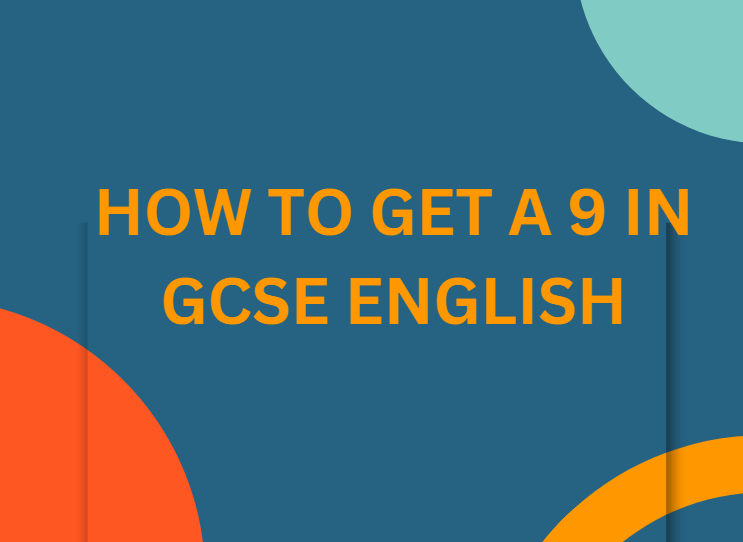Passing the AQA GCSE English Language Paper 1: An introduction
The General Certificate of Secondary Education (GCSE) English Language exam is an assessment undertaken by students in the UK as a part of their secondary education. This exam evaluates students’ abilities in reading, writing, and comprehension. Understanding its structure, requirements, and how to excel in it is essential for success. Let’s delve into the specifics of the GCSE English Language exam.
Overview: The GCSE English Language exam consists of two papers, each focusing on distinct skills. These papers assess students’ proficiency in comprehension, analysis, and writing across various text types.
There are different examining boards, but one of he most popular is AQA
AQA GCSE English language exams.
Unlocking success in the AQA GCSE English Language Paper 1 demands a combination of understanding the exam format and honing your skills to tackle each question effectively. This revision guide is meticulously crafted to equip you with the knowledge and strategies needed to excel in every aspect of the exam.
An Overview
First we we will start with an overview including the two different sections, how many questions in each section and how many marks each question is and the nature of the questions.
Paper 1 of the AQA GCSE English Language exam assesses students’ reading and writing skills. It is divided into two sections: Section A focuses on reading comprehension, while Section B assesses students’ writing abilities. The paper is designed to evaluate students’ understanding of literary texts, their ability to analyze language and structure, as well as their capacity to produce clear and coherent written communication.
Section A: Reading
In Section A, students are required to read and respond to one fiction text. They are assessed on their ability to:
- Retrieve information: Identify and extract specific details from the text.
- Interpretation: Analyse language choices, techniques, and their effects on the reader.
- Analysis of structure: Understand the structural elements of the text and how they contribute to meaning and impact.
- Agreeing/Disagreeing with another student’s statement: You are given a statement by another statement to which you have to write whether you agree or disagree or to what extent you agree with them.
Section B: Writing
Section B focuses on students’ writing skills, requiring them to respond to one writing task from a choice of two. Students are assessed on their ability to:
- Descriptive Writing: Produce a descriptive piece, demonstrating their command of language and ability to create atmosphere, setting, and mood.
- Narrative Writing: Craft a narrative based on a given stimulus, showcasing their storytelling skills, creativity, and ability to engage the reader.
Assessment Objectives:
The AQA GCSE English Language Paper 1 assesses students across the following assessment objectives (AOs):
- AO1:
- identify and interpret explicit and implicit information and ideas
- select and synthesise evidence from different texts
- AO2: Explain, comment on and analyse how writers use language and structure to achieve effects and influence readers, using relevant subject terminology to support their views
- AO3: Compare writers’ ideas and perspectives, as well as how these are conveyed, across two or more texts
- AO4: Evaluate texts critically and support this with appropriate textual references
- AO5: Communicate clearly, effectively and imaginatively, selecting and adapting tone, style and register for different forms, purposes and audiences. Organise information and ideas, using structural and grammatical features to support coherence and cohesion of texts
- AO6: Candidates must use a range of vocabulary and sentence structures for clarity, purpose and effect, with accurate spelling and punctuation. (This requirement must constitute 20% of the marks for each specification as a whole.)
- AO7: Demonstrate presentation skills in a formal setting
- AO8: Listen and respond appropriately to spoken language, including to questions and feedback on presentations
- AO9: Use spoken Standard English effectively in speeches and presentations.
Question Breakdown and Marks:
- Question 1 (4 marks): Reading comprehension – retrieve and interpret information from the text.
- Question 2 (8 marks): Analysis of language – identify and analyze language techniques and their effects.
- Question 3 (8 marks): Analysis of structure – analyze how structural choices contribute to meaning and impact.
- Question 4 (20 marks): Descriptive Writing – produce a descriptive piece based on a given scenario.
- Question 5 (40 marks): Narrative Writing – craft a narrative based on a given stimulus.
Overall, Paper 1 of the AQA GCSE English Language exam assesses students’ reading and writing abilities, including their comprehension, analysis, and creative expression.
Section A: Reading
Now that we have looked at the overview, let us look in more specific detail at each of the questions and look at what information you could provide in some of the answers.
Question 1: Finding Information Model Answer: In this question, you are asked to locate and retrieve specific details from the text. Let’s consider an example. Imagine this is the beginning of an extract about a character called ‘Tim’ and that you are asked to write four facts about Tim:
‘Tim looked up down at the floor in deep despondency and frustration at his inability to win the match with his team mates. He was still young male, eighteen years of age, so the deep upset at his loss to their detested rivals, the ‘Wildcats’ was coupled with a degree of reassurance that he still had many years to play and that in the future there would be other opportunities to win other tournaments. He was studying in university but despite that spent an enormous amount of time watching sports matches….‘
This is not the complete example paragrah in full but what you would do is identify four non-subjective pieces of information and list them. In this paragraph you could list these:
- He is a male
- He is eighteen.
- He is a student
- He was upset.
This question is fairly easy, so it is a question of simply scanning and skimming for information related to facts about Tim and listing them. Do not spend too much time on this. It is only four marks and fairly easy.
Question 2: Language Analysis Model Answer: This question assesses your ability to analyse language techniques employed by the writer. Referring to the following passage:
“The cacophony of car horns reverberated through the bustling city streets, creating a symphony of chaos and discord.”
One language feature to identify and discuss could be the use of imagery: “The writer uses imagery, comparing the car horns to a ‘cacophony’ and the streets to a ‘symphony of chaos’, creating a vivid sensory experience for the reader.”
In this question you should refer to language techniques and linguistic devices this can include many of the following:
- Personification
- Metaphor
- Hyperbole
- Simile
- Alliteration
- Triplets (group of three)
- Onomatopeia
- Repeitition
And so on.
It is 8 marks so make sure you try to use a P.E.E style of writing for each point you are trying to make including quoting the relevant part of the text and elaborating on the point you are making.
Question 3: Structure Analysis Model Answer:
This question delves into the structural elements of the text.
This is quite difficult for some students, but imagine you are watching a film. How does the film start? What is the opening scene? How does it progress, what is the second scene? Always remember an image of a camera or a film director to help you answer this.
You are focusing on movement and progress how the text shifts from one thing to another.
So using the example of the film. Imagine we are watching a short video about a film. This would be a negative depiction of a film.
Negative depiction: First scene involves, two boys fighting with other students shouting and encouraging them. Second scene involves one of the boys in another room in the school with a teacher with a bleeding nose and a teacher putting a plaster on him.
Positive depiction: First scene or shot involves showing a frame of the school overall including its trees and lawns. Second scene involves happy looking students walking the corridors. Third scene shows students smiling and clapping at an award ceremony.
Do you see the difference?
Writers do the above but rather than do it with the medium of camera or film, they do it via mental imagery.
Also you have to talk about the effect on the reader.
Here is the beginning of a model sentence.
‘The writer starts the text by using imagery of two boys fighting thus making the reader visualise a negative picture of violence and aggression. This is reinforced by the use of onomatopoeia such as ‘thud’ and ‘bang’ when describing the fighting between the two boys and the sounds generated by one of the boys falling on the table leaving the reader disturbed by the extremity of the hatred and violence between the two boys….‘
This is just an example of how you could start.
It is also 8 marks.
Question 4: Agreeing/Disagreeing with another student’s statement:
You are provided with a statement by a student on a certain text it could be the student says the writer was successful in showing a character’s particular feelings including how happy or angry they were. You would have to write whether you agree with that or not. How successful was the writer in doing this?
It is usually advisable to agree with the student’s statement and simply elaborate on why the writer has been successful in conveying his intended message or portrayal to the audience.
Useful phrases
Useful phrases for this include sentence openings such as:
‘The writer is successfully able to + verb e.g. depict, portray, convey etc.’
‘The use of + language device e.g. metaphor, simile, etc.’
Also you can use phrases such as:
‘…this has a powerful impact on the reader making them feel …’.
Here you can replace ‘impact’ with many words such as ‘impression’ or ‘effect’, and of course you can replace ‘powerful’ with ‘deep’, ‘very strong‘ and so forth.
‘….in the mind of the reader’
‘…this creates a sense of + noun’
Read lots of model answers and you will soon be familiar with the sort of expressions used to answer this question. Focus on the writer’s technique and also the effect on the reader.
SECTION B
Question 5: Narrative Writing Model Answer: In this question, you’re required to write a narrative based on a picture that you are given or some other written prompt. For instance in one past exam paper the picture was that of a fishing village, with a picture similar (but not the same) to this.
Or you had the choice of writing ‘A story about an unlikely friendship.’
Here is an example answer:
‘In the bustling heart of the city, amidst the chaos of everyday life, an unlikely friendship blossomed between two souls who couldn’t be more different. Meet Lily, a timid bookworm with her nose always buried in a novel, and Kate, a somewhat moody and temperamental fifteen year old student with a volatile exterior but hidden beneath that a very genuine and caring inner core.
Their paths crossed one fateful afternoon when Lily found herself lost in the labyrinth of alleyways, her usual route home disrupted by construction work. Panicked and disoriented, she stumbled upon Kate’s makeshift studio, a colourful explosion of creativity amidst the drab concrete jungle.
At first glance, Lily and Kate seemed worlds apart. Lily, with her prim cardigans and neatly tied hair, and Kate with her casual clothing and scruffy appearance. Yet, as they exchanged hesitant smiles and tentative conversations, they discovered a shared passion for art and an unspoken understanding that transcended societal divides.
Over time, their friendship flourished, each teaching the other valuable lessons about life, love, and the beauty of embracing differences. Lily introduced Kate to the enchanting world of literature, opening her eyes to new perspectives and inspiring him to channel his creativity in more profound ways. In return, Kate showed Lily the vibrant underbelly of the city, introducing her to street art and graffiti culture, where every tag told a story and every mural whispered secrets of the urban landscape.
Together, they embarked on countless adventures, from late-night escapades through the city streets to quiet afternoons spent lost in the pages of a book. They laughed, they cried, they challenged each other to step out of their comfort zones and embrace the unknown.
But as their bond deepened, they faced opposition from those who couldn’t understand or accept their friendship. Lily’s parents disapproved of her association with Kate, fearing she would lead her astray with her rebellious ways Kate’s friends questioned her loyalty, wary of Lily’s privileged background and the potential for betrayal.
Yet, through it all, Lily and Kate emained steadfast in their belief that friendship knows no bounds. They defied stereotypes and shattered expectations, proving that true connection transcends labels and preconceived notions.
As the years passed, their lives took them down different paths, their friendship evolving but never fading. Though they may have drifted apart physically, the memories they shared and the lessons they learned together remained etched in their hearts forever.
In the end, Lily and Kate proved that the most unlikely of friendships can often be the most profound, teaching us all that love, acceptance, and understanding are the true pillars of human connection.
It is 40 marks.
To pass this learn:
- How to use different language techniques effectively.
- Use less commonly used words that will make you stand out in comparison to other students, but use them appropriately and correctly.
- Read lots of literary works and observe how the writers craft their texts.
- Read lots of model answers.
If you have any more questions or would like personal tuition please feel free to contact us.






